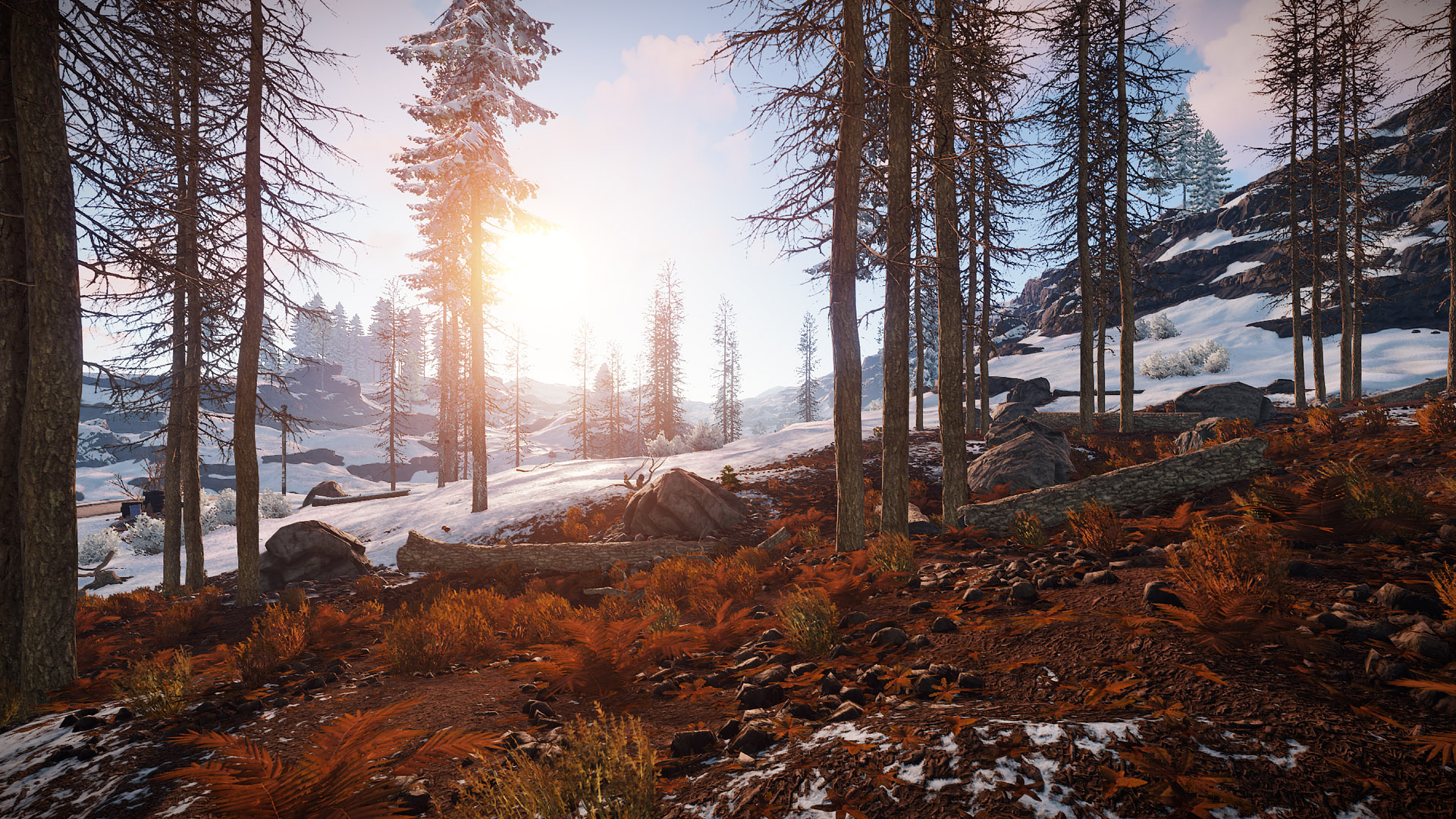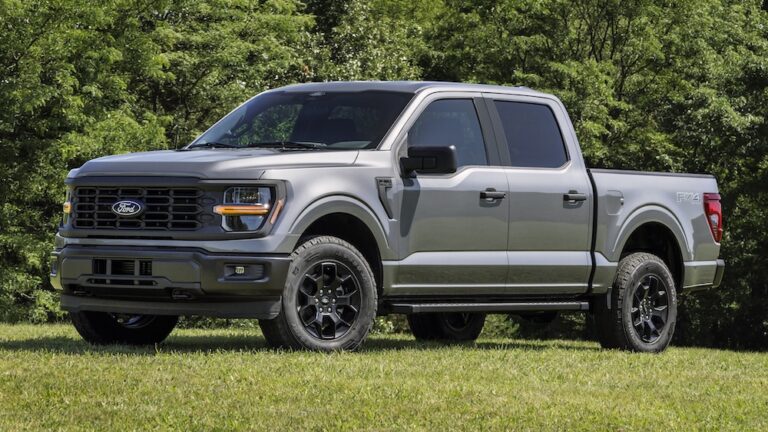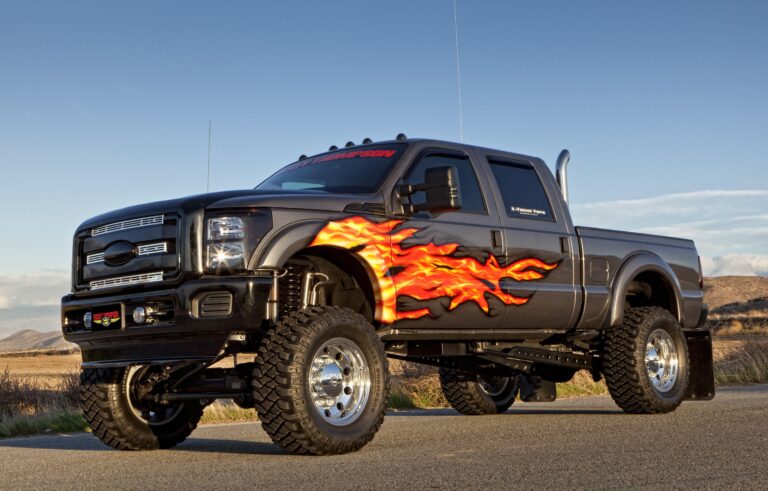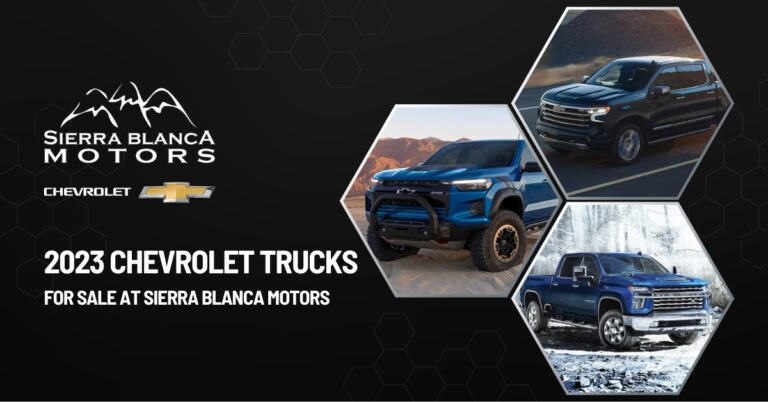Rust Free Trucks For Sale In Ohio: A Comprehensive Buyer’s Guide
Rust Free Trucks For Sale In Ohio: A Comprehensive Buyer’s Guide cars.truckstrend.com
Ohio, with its stunning seasonal changes, also presents a formidable challenge to vehicle longevity: rust. The combination of snowy winters, road salt, and fluctuating temperatures creates an environment where metal components are constantly under attack. For truck owners, who often rely on their vehicles for work, recreation, or daily utility, rust is more than just a cosmetic issue; it’s a structural threat that compromises safety, performance, and resale value. This comprehensive guide will delve into the world of "rust-free trucks for sale in Ohio," helping you understand what this crucial term truly means, why it matters, and how to navigate the market to find your ideal, durable workhorse.
Why Rust-Free Matters in Ohio: The Climate Challenge
Rust Free Trucks For Sale In Ohio: A Comprehensive Buyer’s Guide
Ohio’s climate is notoriously tough on vehicles. From late fall through early spring, roads are frequently treated with salt and brine solutions to combat ice and snow. While essential for safe driving, these chemicals are highly corrosive. They cling to the underside of vehicles, seeping into every crevice, accelerating the oxidation process that leads to rust.
The Impact of Rust:
- Structural Integrity: Rust weakens critical components like the frame, suspension mounts, body mounts, and subframe. A rusted frame can buckle or even break, leading to catastrophic failure.
- Safety Hazards: Rust can compromise brake lines, fuel lines, steering components, and exhaust systems. A rusted brake line could burst, leading to a complete loss of braking power, a terrifying prospect.
- Mechanical Failure: Rust often seizes bolts and fasteners, making routine maintenance and repairs incredibly difficult and costly. Components like control arms, leaf springs, and shock mounts can rust through, requiring expensive replacements.
- Diminished Resale Value: A truck riddled with rust is a significant deterrent for potential buyers. Even if mechanically sound, extensive rust immediately signals neglect and potential underlying issues, severely impacting its market value.
- Appearance: While secondary to structural concerns, severe rust on body panels, fenders, and rocker panels makes a truck look old and uncared for, reflecting poorly on the owner.

Investing in a "rust-free" truck in Ohio means investing in peace of mind, safety, and a vehicle that will reliably serve you for years to come, holding its value much better than its corroded counterparts.
Defining "Rust-Free": What to Look For
The term "rust-free" can be subjective. In reality, very few vehicles, especially older ones, are completely devoid of any oxidation. The key is understanding the difference between superficial surface rust and structural, cancerous corrosion. A truly "rust-free" truck in Ohio means one that exhibits no significant structural rust, no perforating rust on critical body panels, and minimal to no surface rust that can be easily addressed.
Key Areas to Inspect for Rust:

- Frame Rails: This is paramount. Inspect the entire length of the frame, both outer and inner surfaces, for flaking, bubbling, or soft spots. Pay close attention to welds, crossmembers, and areas where dirt and salt accumulate. Tap the frame with a small hammer – a solid "thud" is good; a dull "thunk" or breakthrough indicates severe rust.
- Cab Corners and Rocker Panels: These areas, especially on older trucks, are notorious rust traps due to poor drainage and constant exposure to road spray. Look for bubbling paint, holes, or body filler covering rust.
- Wheel Wells and Fenders: The inner and outer portions of the wheel wells, and the lip of the fenders, are common spots for rust to start.
- Brake Lines and Fuel Lines: Trace these lines from front to back. They are often made of steel and are highly susceptible to corrosion, which can lead to dangerous leaks.
- Suspension Components: Inspect control arms, leaf springs, shock mounts, and sway bar links for heavy rust that could compromise their integrity.
- Bed and Tailgate: Check the bed floor, especially under bed liners, and the tailgate for rust, particularly around hinges and latches.
- Engine Bay: While less common for structural rust, check battery trays, inner fenders, and firewall for any signs of corrosion.

A "rust-free" truck should have a solid, intact frame and minimal to no significant rust on the critical body and undercarriage components. Minor surface rust on easily replaceable parts (e.g., exhaust hangers) is generally acceptable, but widespread or deep rust is a red flag.
Where to Find Rust-Free Trucks in Ohio
Finding a rust-free truck in Ohio requires diligence and knowing where to look.
-
Local Dealerships (New and Used):
- Pros: Reputable dealerships often offer warranties, financing options, and a vetted inventory. They may have a wider selection of newer models or certified pre-owned trucks that have undergone inspections.
- Cons: Generally higher prices due to overhead and markups. Their "rust-free" claims should still be independently verified.
- Tip: Ask about their sourcing. Do they buy trucks locally, or do they import from southern states?
-
Private Sellers (Online Marketplaces, Local Ads):
- Pros: Potentially lower prices, more room for negotiation, and the ability to speak directly with the previous owner about the truck’s history and maintenance.
- Cons: No warranty, "as-is" sales, higher risk of undisclosed issues. More legwork required for inspection and title transfer.
- Platforms: Craigslist, Facebook Marketplace, AutoTrader, CarGurus, local classifieds.
- Tip: Always ask for clear, high-resolution photos of the undercarriage and critical rust-prone areas before driving to see the truck. Be wary of sellers who refuse or provide only blurry images.
-
"Southern Trucks" or Out-of-State Imports:
- Concept: Many buyers specifically seek trucks from states with dry, non-salt climates like Arizona, Texas, Florida, or California. These trucks often have pristine undercarriages.
- Pros: Significantly reduced risk of rust, often better overall condition due to less harsh weather.
- Cons: Higher purchase price (due to demand), transportation costs (if you’re buying sight unseen or from a distance), and potential for other undisclosed issues (e.g., sun damage to interior, different emissions standards).
- Tip: If buying from afar, insist on a third-party pre-purchase inspection from a reputable mechanic in the truck’s location. Factor in shipping costs or the time/expense of traveling to retrieve it.
-
Auctions (Public, Government, Police):
- Pros: Potentially very low prices, wide variety of vehicles.
- Cons: High risk. Vehicles are typically sold "as-is" with little to no opportunity for detailed inspection or test drives. Often require cash payment. Not recommended for novice buyers.
The Inspection Process: Your Rust-Free Checklist
Once you’ve identified a potential rust-free candidate, a thorough inspection is non-negotiable.
-
Initial Visual Walk-Around (Daylight Preferred):
- Look for consistent paint color (signs of body work).
- Check panel gaps for uniformity (signs of accidents).
- Open and close all doors, tailgate, and hood – do they operate smoothly?
- Inspect tires for even wear.
-
Under the Truck (Bring a Flashlight and Creeper):
- Frame: Lie on your creeper and meticulously inspect every inch of the frame rails, crossmembers, and body mounts. Look for flaking rust, bubbling, or holes. Tap with a small hammer.
- Brake and Fuel Lines: Trace them from front to back, looking for any signs of corrosion or leaks.
- Suspension: Examine leaf springs, coil springs, control arms, and shock mounts for heavy rust or damage.
- Exhaust System: While not critical for safety, excessive rust here can lead to leaks and costly repairs.
- Floor Pans: Check the underside of the cab and bed for holes or patches.
-
Inside the Cab and Engine Bay:
- Cab Corners/Rocker Panels: From the inside, lift the carpets if possible to check the floor pans and cab corners for rust that might be hidden.
- Battery Tray: This is a common spot for rust due to battery acid leaks.
- Fluid Leaks: Check for any signs of oil, coolant, or transmission fluid leaks.
-
The Magnet Test:
- Bring a small magnet. Apply it to areas where you suspect rust might be covered by body filler (e.g., rocker panels, fender arches). If the magnet doesn’t stick, it’s likely filler over rust.
-
Professional Pre-Purchase Inspection (PPI):
- Strongly Recommended: This is perhaps the single most important step. Hire an independent mechanic, one you trust or one with good reviews, to perform a comprehensive PPI.
- What they do: They will put the truck on a lift, thoroughly inspect the undercarriage, check for mechanical issues, scan for diagnostic codes, and provide a detailed report on the vehicle’s overall condition, including any hidden rust.
- Cost: Typically $100-$200, a small price to pay to avoid a multi-thousand-dollar mistake. If a seller refuses a PPI, walk away.
-
Service Records and Vehicle History Report:
- Ask the seller for service records. These can indicate if regular maintenance was performed and if any rust prevention treatments were applied.
- Obtain a CarFax or AutoCheck report. While they don’t always detail rust, they can show if the truck was previously registered in a rust-prone state, involved in accidents, or had salvage titles.
Protecting Your Investment: Rust Prevention After Purchase
Congratulations! You’ve found and purchased a rust-free truck. Now, the crucial next step is to keep it rust-free, especially in Ohio.
-
Professional Rust Proofing/Undercoating:
- Fluid Film, Krown, Ziebart, Rust Check: These are popular options. Fluid Film is a lanolin-based product that creeps into seams and crevices, offering excellent protection. Krown and Ziebart offer more permanent, waxy coatings. Research the best option for your truck and budget. Re-application is often needed annually.
- Electronic Rust Protection: While some claim effectiveness, scientific evidence is mixed. Focus on physical barrier methods.
-
Regular Washing, Especially in Winter:
- After driving on salted roads, wash your truck as soon as possible, paying special attention to the undercarriage. Many car washes offer undercarriage sprays.
-
Hand Washing the Underside:
- Periodically, get underneath with a hose and nozzle to thoroughly rinse away trapped salt and dirt from frame rails, suspension components, and wheel wells.
-
Promptly Repair Paint Chips and Scratches:
- Even small chips can expose bare metal to moisture and salt, leading to rust. Touch them up quickly.
-
Garage Parking:
- Parking indoors protects your truck from direct exposure to rain, snow, and road salt, and allows it to dry out more effectively.
-
Check and Clear Drainage Holes:
- Ensure drainage holes in doors, rocker panels, and the bed are clear of debris to prevent water from pooling.
Rust Free Trucks For Sale In Ohio: Estimated Price Ranges
It’s impossible to give exact prices for "rust-free trucks" as the market fluctuates wildly based on make, model, year, mileage, trim level, and specific condition. However, this table provides estimated price ranges for common categories of rust-free trucks you might find in Ohio, assuming good overall mechanical condition.
| Truck Type/Category | Typical Age Range (Years) | Perceived Rust-Free Quality | Estimated Price Range (USD) | Key Considerations |
|---|---|---|---|---|
| Older Light-Duty | 15-25+ years | Excellent (Southern Import) | $10,000 – $25,000+ | Classic appeal, potential for higher mileage, may need more mechanical upkeep. |
| (e.g., F-150, Silverado) | Good (Local/Well-Maintained) | $8,000 – $18,000 | Verify maintenance, inspect thoroughly for hidden issues. | |
| Mid-Age Light-Duty | 8-15 years | Excellent (Southern Import) | $18,000 – $35,000+ | Modern features, reliable, often sought after. |
| (e.g., Ram 1500, Tundra) | Good (Local/Well-Maintained) | $15,000 – $30,000 | Best value proposition, good balance of age and condition. | |
| Newer Light-Duty | 3-7 years | Excellent (Any Source) | $30,000 – $55,000+ | Latest tech, lower mileage, higher initial cost, often CPO options. |
| (e.g., Colorado, Tacoma) | ||||
| Heavy-Duty (Diesel) | 10-20 years | Excellent (Southern Import) | $25,000 – $50,000+ | Higher initial cost, higher maintenance, strong demand for clean diesels. |
| (e.g., F-250, Sierra 2500) | Good (Local/Well-Maintained) | $20,000 – $40,000 | Frame integrity is critical for heavy use. | |
| Specialty/Restored | Varies (Often 30+ years) | Excellent (Restored/Custom) | $30,000 – $70,000+ | Niche market, condition highly dependent on restoration quality. |
| (e.g., Bronco, K5 Blazer) |
Disclaimer: These are broad estimates. Actual prices will vary significantly based on specific make, model, trim level, engine, mileage, options, and the exact condition of the truck. Always conduct thorough research and inspection.
Frequently Asked Questions (FAQ)
Q1: Is "rust-free" truly possible for a truck in Ohio?
A1: Yes, it is possible, but it requires diligence. "Rust-free" often implies a truck that has spent most of its life in a dry, non-salt state (a "southern truck") or one that has been meticulously maintained and rust-proofed since new in Ohio. It means no significant structural or perforating rust.
Q2: How much more expensive are rust-free trucks compared to rusty ones?
A2: Rust-free trucks typically command a premium, often 10-30% higher, or even more for highly sought-after models. However, this premium is often offset by lower future repair costs, higher safety, and significantly better resale value. It’s an investment in longevity and peace of mind.
Q3: Can I rust-proof a truck after buying it to prevent future rust?
A3: Absolutely, and it’s highly recommended, especially if you plan to keep the truck in Ohio. Products like Fluid Film, Krown, or Ziebart undercoatings can significantly slow down or prevent the onset of new rust. Regular re-application (often annually) is key.
Q4: What’s the best time of year to buy a rust-free truck in Ohio?
A4: Generally, late spring, summer, or early fall are good times. You can inspect the truck more easily without snow or ice, and sellers might be more motivated before winter storage. If looking for a southern import, dealers might bring them in year-round, but demand can fluctuate.
Q5: Should I trust a seller who says their truck is "no rust" without verification?
A5: Never. Always verify the claim yourself with a thorough inspection, and ideally, a pre-purchase inspection by an independent mechanic. Some sellers may genuinely not know the extent of the rust, while others may intentionally misrepresent the condition. Trust, but verify.
Q6: Are certain truck brands or models more prone to rust than others?
A6: While all vehicles can rust, some models or generations of trucks have been historically more susceptible due to design flaws (e.g., poor drainage points, thin paint), material choices, or manufacturing processes. Researching common rust spots for specific makes and models you’re considering can be very helpful.
Conclusion
Finding a truly rust-free truck for sale in Ohio is a rewarding endeavor that protects your investment and ensures your safety. While the quest requires patience and thoroughness, understanding what "rust-free" entails, knowing where to search, and diligently inspecting potential candidates are your keys to success. Remember, a professional pre-purchase inspection is your best defense against hidden corrosion. Once you’ve secured your rust-free workhorse, commit to ongoing rust prevention to ensure it remains a reliable, valuable asset for years to come, conquering Ohio’s challenging climate with grace and durability.






